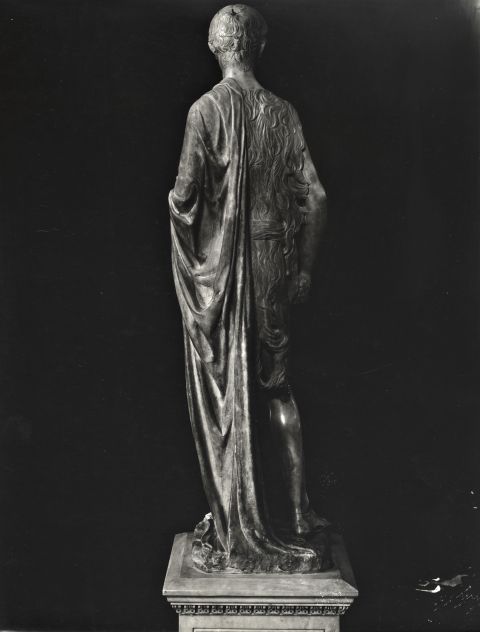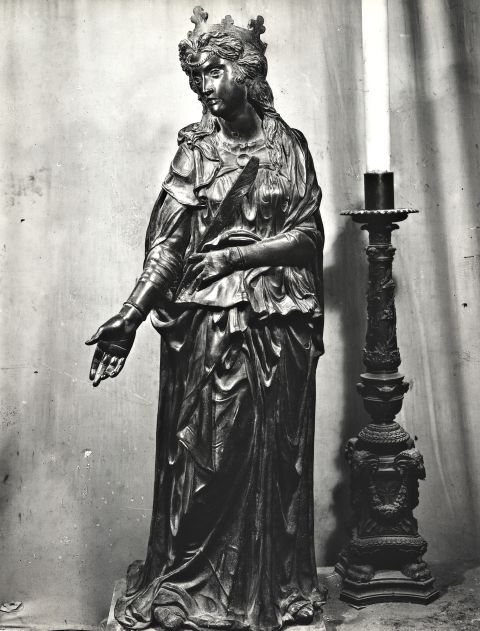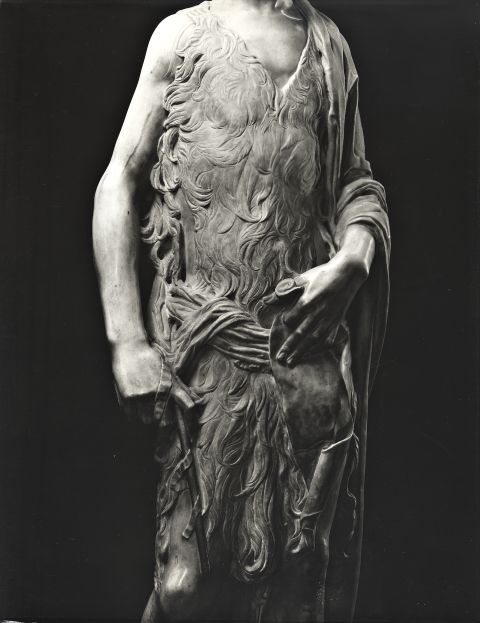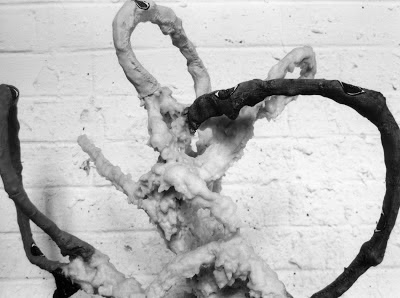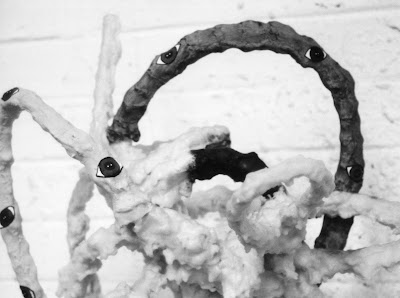Martelli Saint John, ca. 1440-1457, Settignano and Donatello
Martelli Saint John by Settignano and Donatello also demonstrates the idea that a mathematical equation could also be used to describe the figure in relation to the body. This equation has been demonstrated several times in the history of painting and especially the Renaissance. Several times in Renaissance history have geometric equations been used but none so exquisitely as with this piece. I am wondering where Settignano came from. He almost seems too gorgeous in his application to be an Italian artist. But then again when you look at the development of Gothic French sculpture next to Gothic painting and the development to Renaissance, the refinement is almost revolutionary in application. Perhaps Settignano came from a different place like Germany for secular studies. His technique seemed at the peak of Renaissance sculptures development. They seemed far more advanced in intellectual freedom. Unlike the Renaissance painters who seemed influenced by embroidery, Italian Renaissance sculpture seems far more influenced by architecture and churches.



